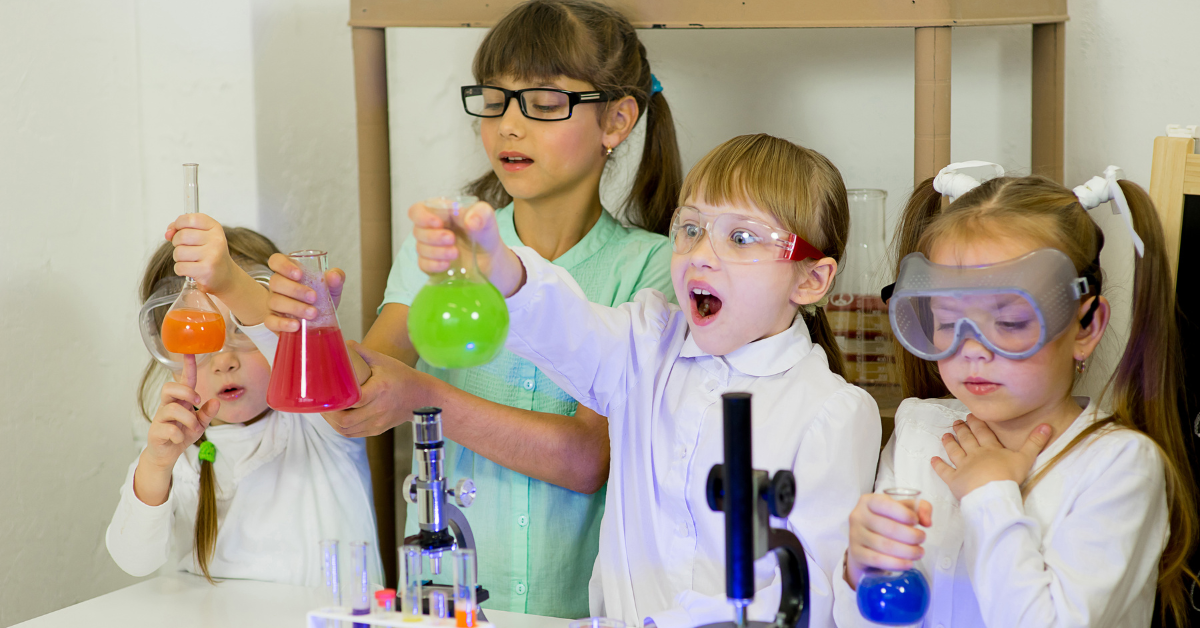The Best Science Experiments You Can Try at Home

Science is all around us, and you don’t need a lab to perform exciting experiments! Many science experiments can be done with household materials, making learning fun and interactive. Whether you love chemistry, physics, or biology, these experiments will amaze you and spark curiosity.
1. Baking Soda and Vinegar Volcano
What You’ll Need:
- Baking soda
- Vinegar
- Dish soap
- Food coloring
- Small container or cup
How to Do It:
- Place the container on a tray or plate.
- Add 2 tablespoons of baking soda inside.
- Mix a few drops of food coloring with ½ cup of vinegar.
- Pour the vinegar mixture into the container and watch it fizz!
Why It Works:
The reaction between baking soda (a base) and vinegar (an acid) creates carbon dioxide gas, which makes the mixture bubble like lava.
2. Invisible Ink with Lemon Juice
What You’ll Need:
- Lemon juice
- Cotton swabs
- White paper
- A lamp or candle
How to Do It:
- Dip a cotton swab into lemon juice and use it to write a message on paper.
- Let the paper dry completely.
- Hold the paper close to a warm light bulb or candle (with adult supervision).
- The invisible writing will appear!
Why It Works:
Lemon juice oxidizes and turns brown when heated, revealing the hidden message.
3. Rainbow Walking Water
What You’ll Need:
- 6 clear cups
- Water
- Food coloring (red, yellow, and blue)
- Paper towels
How to Do It:
- Fill three cups with water and leave the other three empty.
- Add red, yellow, and blue food coloring to the cups with water.
- Fold paper towels and place them between the cups (half in colored water, half in an empty cup).
- Watch as the water “walks” into the empty cups, creating new colors!
Why It Works:
Capillary action allows water to move through the paper towel fibers, mixing colors in the process.
4. Floating Egg Experiment
What You’ll Need:
- 2 glasses of water
- Salt
- An egg
How to Do It:
- Fill one glass with plain water and the other with salt water (add 6 tablespoons of salt).
- Place the egg in the plain water—it sinks.
- Now place the egg in the saltwater—it floats!
Why It Works:
Saltwater is denser than freshwater, making the egg float due to buoyancy.
5. DIY Lava Lamp
What You’ll Need:
- A clear bottle
- Vegetable oil
- Water
- Food coloring
- Alka-Seltzer tablets
How to Do It:
- Fill the bottle ¾ full with vegetable oil.
- Add water until it almost reaches the top.
- Drop in a few drops of food coloring.
- Break an Alka-Seltzer tablet into pieces and drop them in one at a time.
- Watch as the bubbles create a lava lamp effect!
Why It Works:
Oil and water don’t mix, and Alka-Seltzer releases carbon dioxide, causing colored water bubbles to rise and fall.
6. Balloon-Powered Car
What You’ll Need:
- A balloon
- A plastic bottle
- Straws
- Wheels (bottle caps or cardboard circles)
How to Do It:
- Attach four wheels to the plastic bottle.
- Tape a straw to the back of the car.
- Inflate a balloon, attach it to the straw, and hold the air inside.
- Release the air and watch the car move!
Why It Works:
Air escaping from the balloon pushes the car forward, demonstrating Newton’s Third Law of Motion.
7. Magic Pepper Repellent
What You’ll Need:
- A plate of water
- Black pepper
- Dish soap
How to Do It:
- Sprinkle black pepper onto the water surface.
- Dip your finger in dish soap and touch the water.
- The pepper moves away instantly!
Why It Works:
Soap breaks the surface tension of the water, pushing the pepper away.
8. Growing a Bean Sprout in a Bag
What You’ll Need:
- A clear plastic bag
- A paper towel
- A dried bean (kidney bean or pinto bean)
- Water
How to Do It:
- Wet the paper towel and place it inside the plastic bag.
- Put a bean seed between the towel and the plastic.
- Seal the bag and tape it to a sunny window.
- In a few days, you’ll see roots and sprouts grow!
Why It Works:
The moisture and warmth create the perfect environment for seed germination.
9. Static Electricity Dancing Tissue
What You’ll Need:
- A plastic comb
- Small pieces of tissue paper
How to Do It:
- Tear the tissue into small pieces and place them on a table.
- Rub the plastic comb on your hair for 30 seconds.
- Hold the comb near the tissue pieces and watch them jump!
Why It Works:
The comb gains static electricity, attracting lightweight objects.
10. Instant Ice Experiment
What You’ll Need:
- A bottle of purified water
- Freezer
How to Do It:
- Place a bottle of purified water in the freezer for 2-3 hours.
- Carefully remove it before it fully freezes.
- Pour the water over an ice cube, and it will instantly turn to ice!
Why It Works:
Purified water stays supercooled, and when it touches an ice cube, it freezes instantly.
Conclusion
These science experiments are simple, fun, and educational. They help kids and adults understand scientific principles using everyday materials. Try them at home and explore the wonders of chemistry, physics, and biology in an exciting way!










